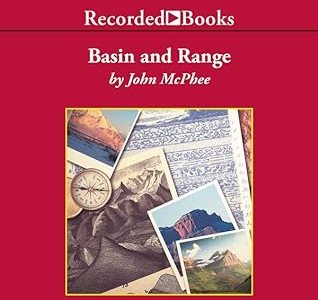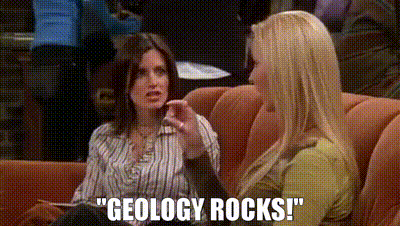Basin and Range by John McPhee
My rating: 5 of 5 stars
If you had told me that I’d absolutely adore a nonfiction book about geology, a book now over 40 years old, I would have seriously doubted your sanity. But that was before I discovered (thanks, Justin!) the works of John McPhee.
And now, in the nerdiest pun ever, I can happily proclaim — GEOLOGY ROCKS!!!
“If you free yourself from the conventional reaction to a quantity like a million years, you free yourself a bit from the boundaries of human time. And then in a way you do not live at all, but in another way you live forever.”
I suppose if you think of geology as a study of the unimaginable depths of time then the excitement suddenly makes sense. Because it’s not just geology; it’s the look at the absolutely mind-boggling timescale of planetary history where we are but a tiny speck. It’s the power of the slow change that shapes and reshapes the Earth.
“If by some fiat I had to restrict all this writing to one sentence, this is the one I would choose: The summit of Mt. Everest is marine limestone.”
It is a skill taking a subject without the reputation for being exciting — seriously, it’s rocks that move on the timescale of tectonic plates rearranging the planet verrrrrrry veeeeeerrrrrrrry slowly — and making it fascinating. In his trip along Interstate 80 McPhee takes on the journey through geological epochs as well as a crash course in geological theories (how did we figure out plate tectonics – since I was one of those kids taking the knowledge of that for granted?). Along the way we meet the experts on geology (Kenneth Deffeyes sounds like a lovely person to hang out with) and hear their explanations of the field, and tag along with McPhee on field expeditions and even some silver mining.
“A million years is a short time – the shortest worth messing with for most problems. You begin tuning your mind to a time scale that is the planet’s time scale. For me, it is almost unconscious now and is a kind of companionship with the earth.”
John McPhee is not a geologist; he is a journalist and a writer — and apparently a damn good one, with this book a great example of good popular science writing that can make any literary fiction hang its head in shame and go to its room without dinner. The writing is clear and expressive without ever being over-the-top, without over-philosophizing, without getting lost in metaphors. The little anecdotes about the scientists he interviews are just enough to give you an idea about people involved but not to the point of ever becoming annoying digressions. He gets to the point unerringly while still using his confident writing to make geology shine.
Plus, he’s genuinely funny.
“As years went by, such verbal deposits would thicken. Someone developed enough effrontery to call a piece of our earth an epieugeosyncline. There were those who said interfluve, when they meant between two streams, and a perfectly good word like mesopotamian would do. A cactolith, according to the American Geological Institute’s Glossary of Geology and Related Sciences, was “a quasi-horizontal chonolith composed of anastomosing ductoliths, whose distal ends curl like a harpolith, thin like a sphenolith, or bulge discordantly like an akmolith or ethmolith.” The same class of people who called one rock serpentine called another jacupirangite. Clinoptilolite, eclogite, migmatite, tincalconite, szaibelyite, pupellyite. Meyerhoffferite. The same class of people who called one rock paracelsian called another despujolsite. Mtakirchheimerite, phlogopite, katzenbuckelite, mboziite, noselite, neighborite, samsonite, pigeonite, muskoxite, pabstite, aenigmatite. Joesmithite.”
5 stars. My first McPhee — and certainly not my last.



